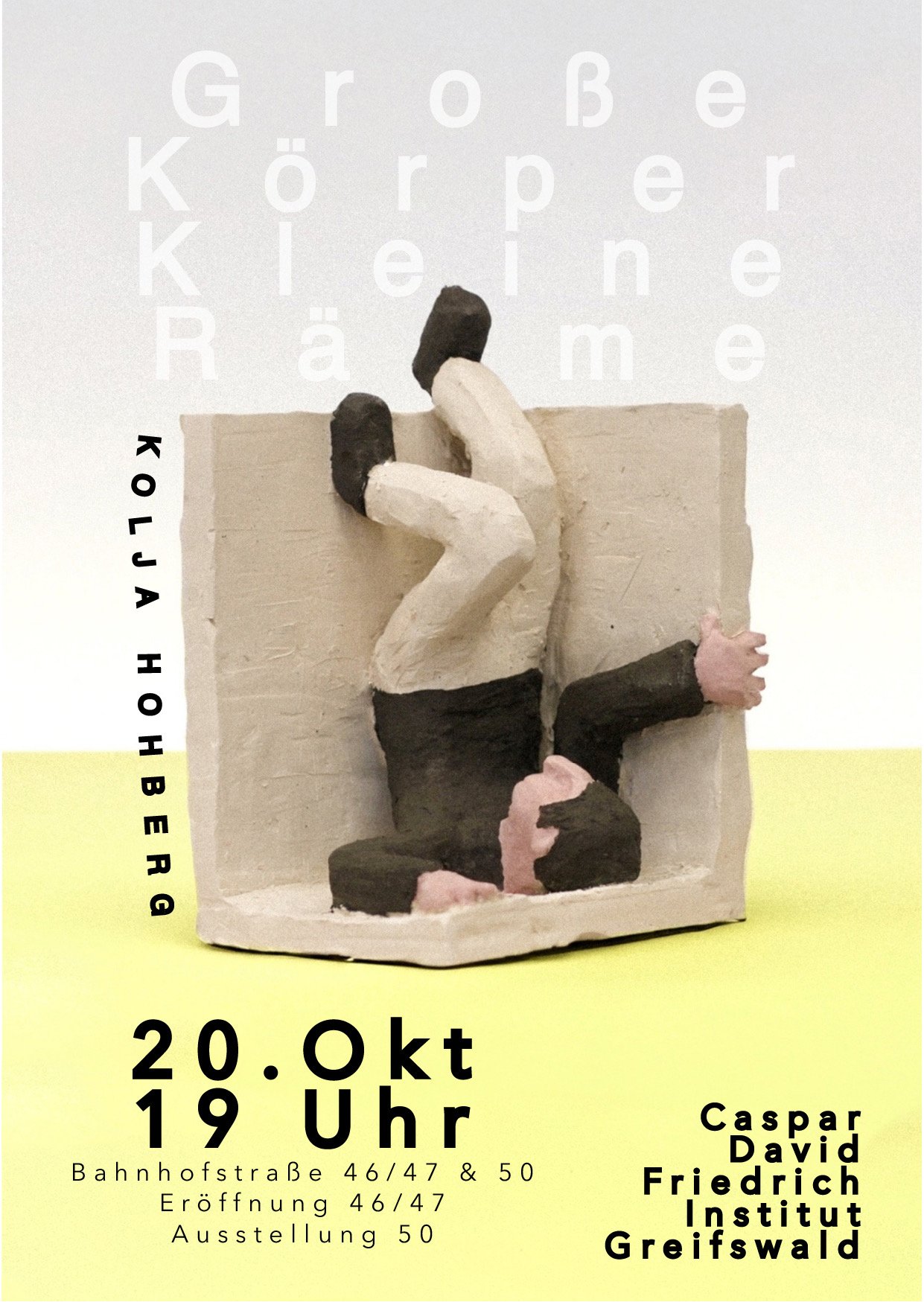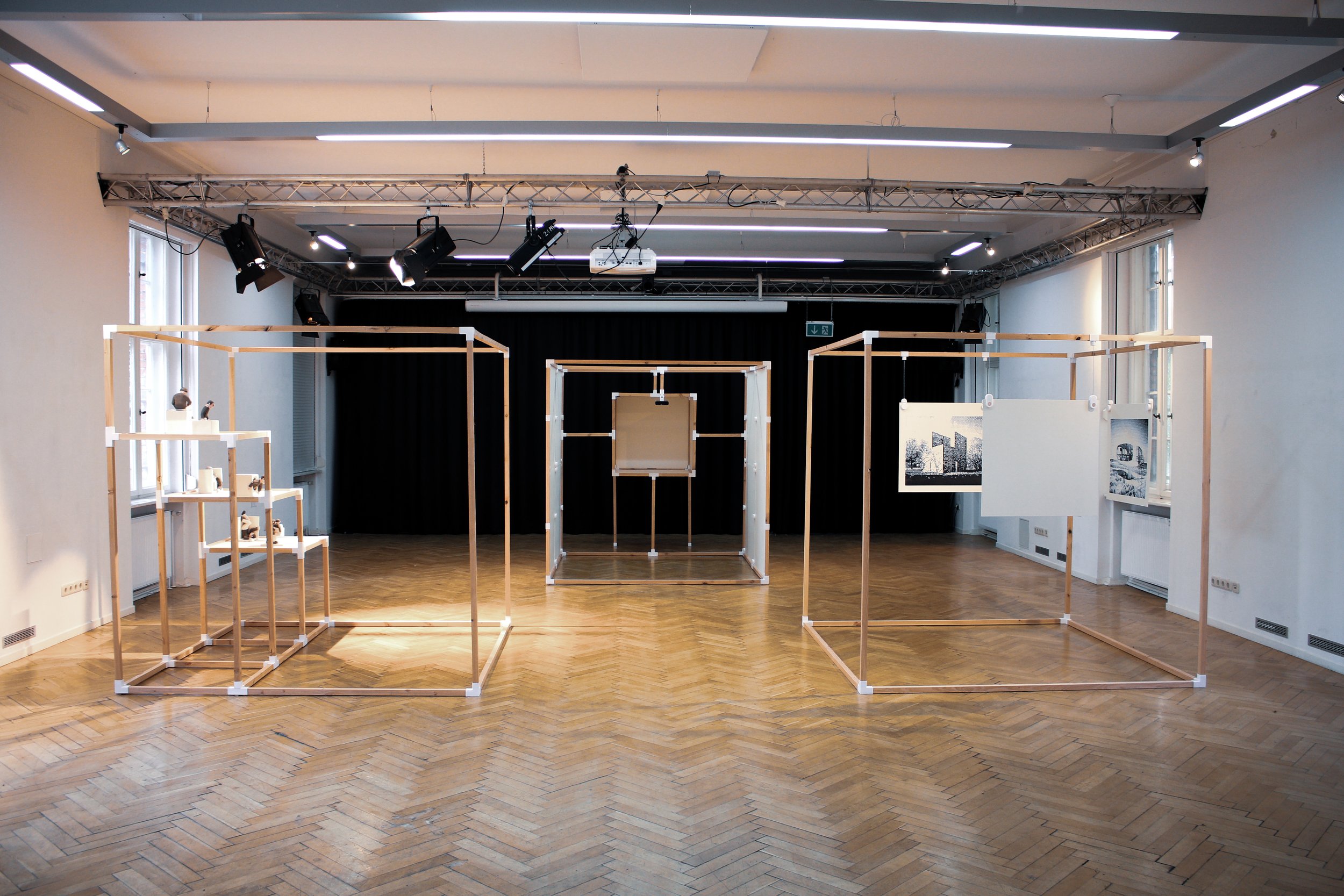Große Körper Kleine Räume
(2023)
As part of my examination, I curated an exhibition in the autumn of 2023 centered around the theme of the interplay between the human body and its surrounding space with the title Große Körper Kleine Räume (Large Bodies Small Spaces. A key directive for this showcase was to seamlessly integrate works from diverse artistic disciplines. Choices for inclusion ranged from painting and sculpture to printmaking, photography, and media art. To unite these selected disciplines into a cohesive exhibition concept, I designed individual pavilions for each category, employing a modular plug-in system tailored to the form of the artworks.
The inaugural pavilion of the exhibition was dedicated to screen-printed graphics showcasing various architectural structures that challenge conventional modes of living in unique ways. These structures, featured works by Ulrich Müthers, Erwin Heerich, and Terunobu Fujimori, served as significant influences for the exhibition and were consequently depicted in these prints. All three graphics are photographs taken with a Gameboy Camera, extracted using a special card reader, and reproduced through screen printing. This unconventional technique was selected to underscore the overarching theme, as the digital space – or the resolution of the photographs in these graphics – is inherently limited, conveying a sense of intimacy and restraint.
The second pavilion showcases a direct engagement with the theme of Large Bodies and Small Spaces, consisting of six distinct ceramic works. Each of these works features a human figure that must adapt to the constraints of the space in which it is placed. Sometimes, a figure squeezes itself into the cramped space between two walls, while at other times, someone climbs out of a hole in a vastly undersized square room. This pavilion also carries an autobiographical element, in that I, too, found myself repeatedly contending with constraining scenarios during the construction of this exhibition in order to ultimately create a fitting final product that aligned with the overarching theme.
The final pavilion illustrates the construction of the exhibition's spaces by juxtaposing digital design with the eventual physical assembly. Three distinct animations were projected within a cube, demonstrating the gradual assembly of the individual pavilions. These animations were contrasted with footage of the exhibition's setup process. Given that many elements of the exhibition were initially designed digitally and later translated into the physical realm using various techniques such as 3D printing, it was not entirely clear until the setup whether all the pieces would fit together seamlessly and the exhibition could be realized as planned. The projection in the final pavilion aimed to visually depict this difference.












